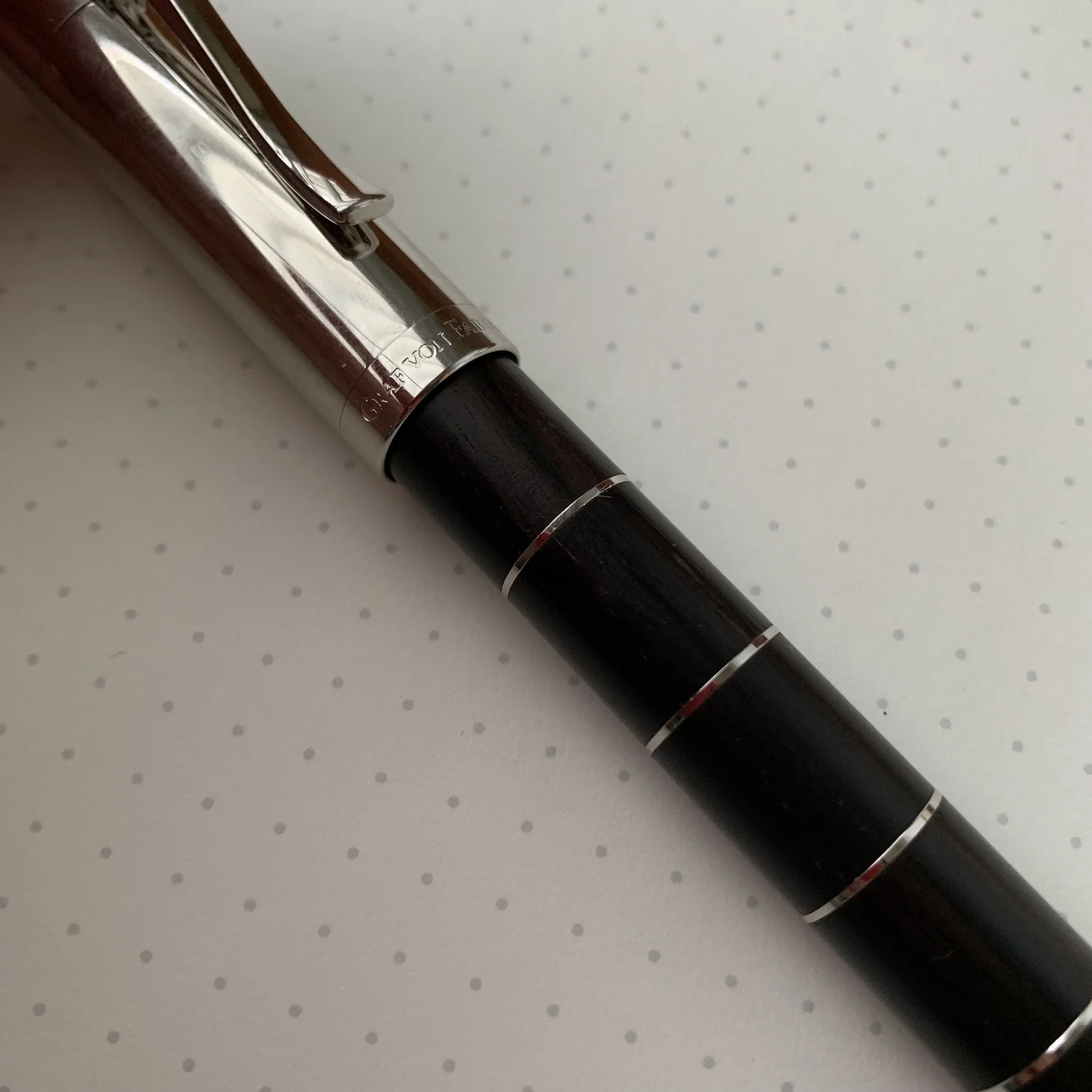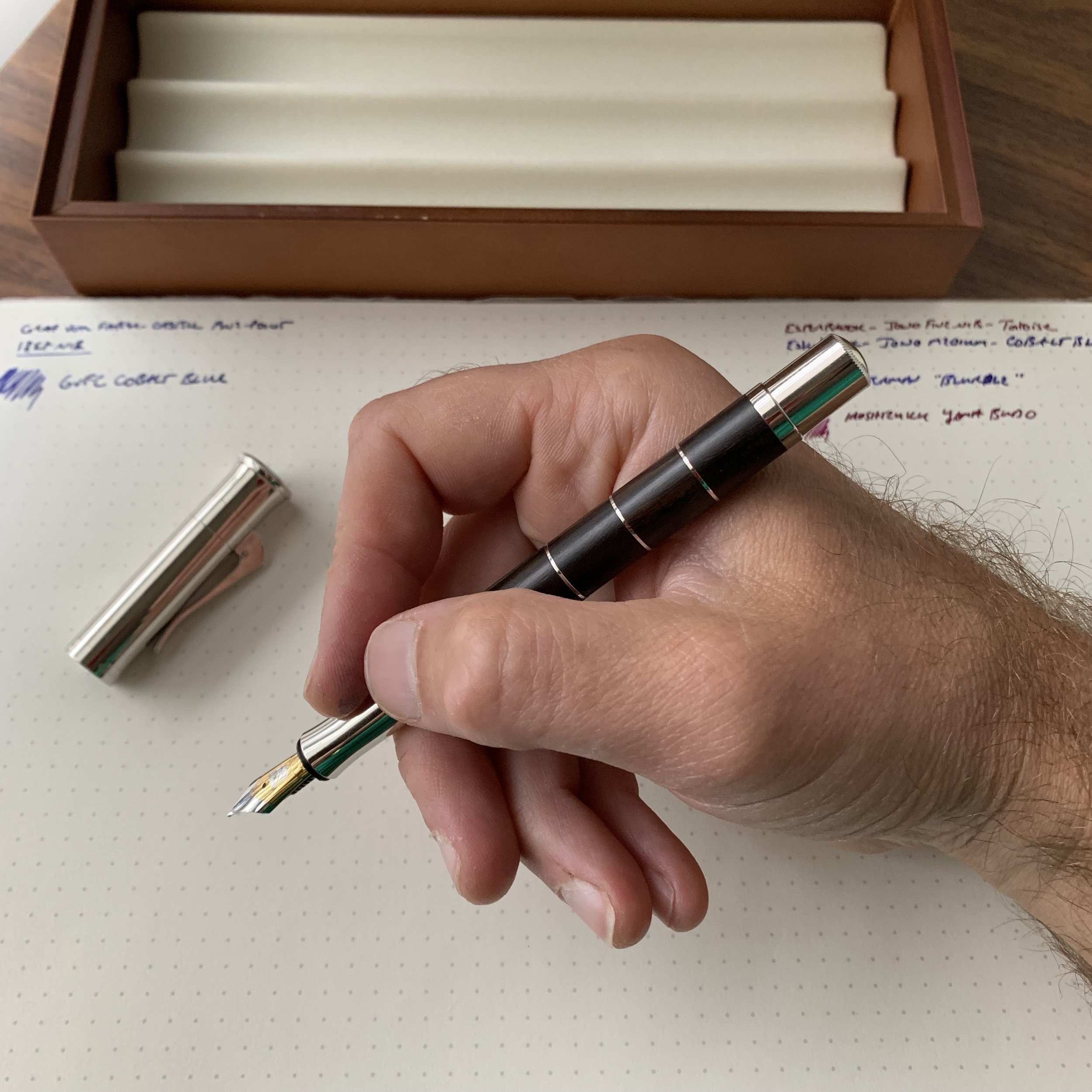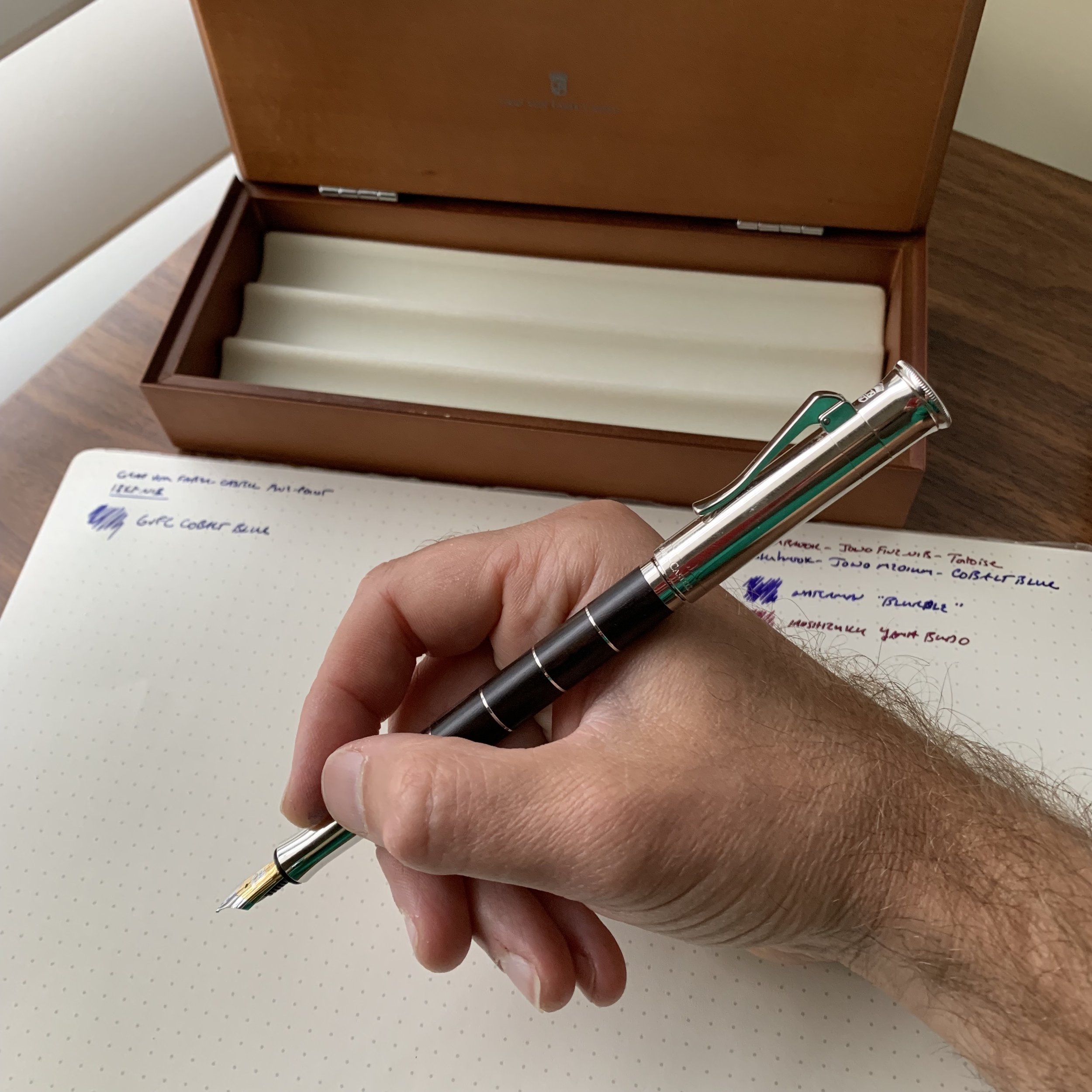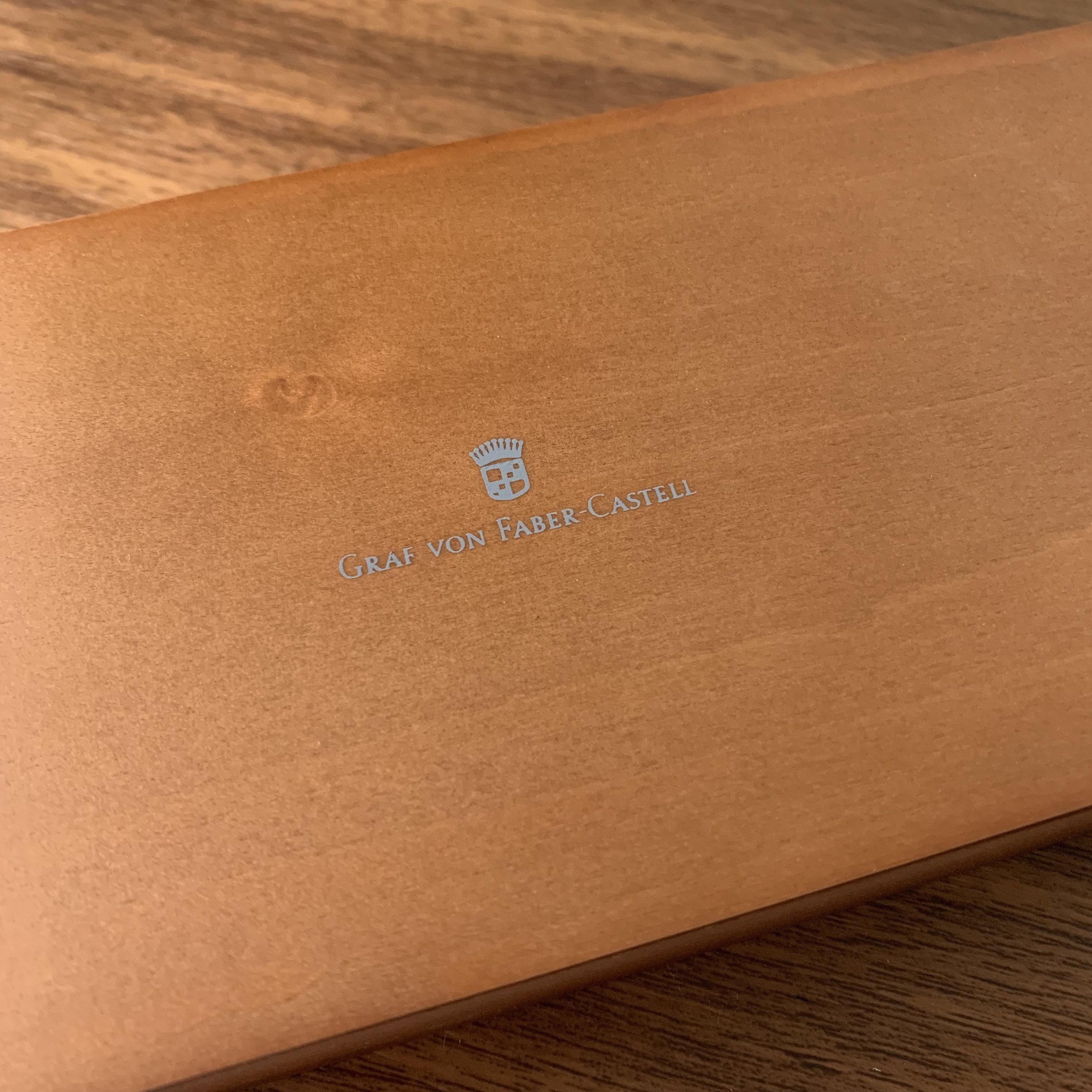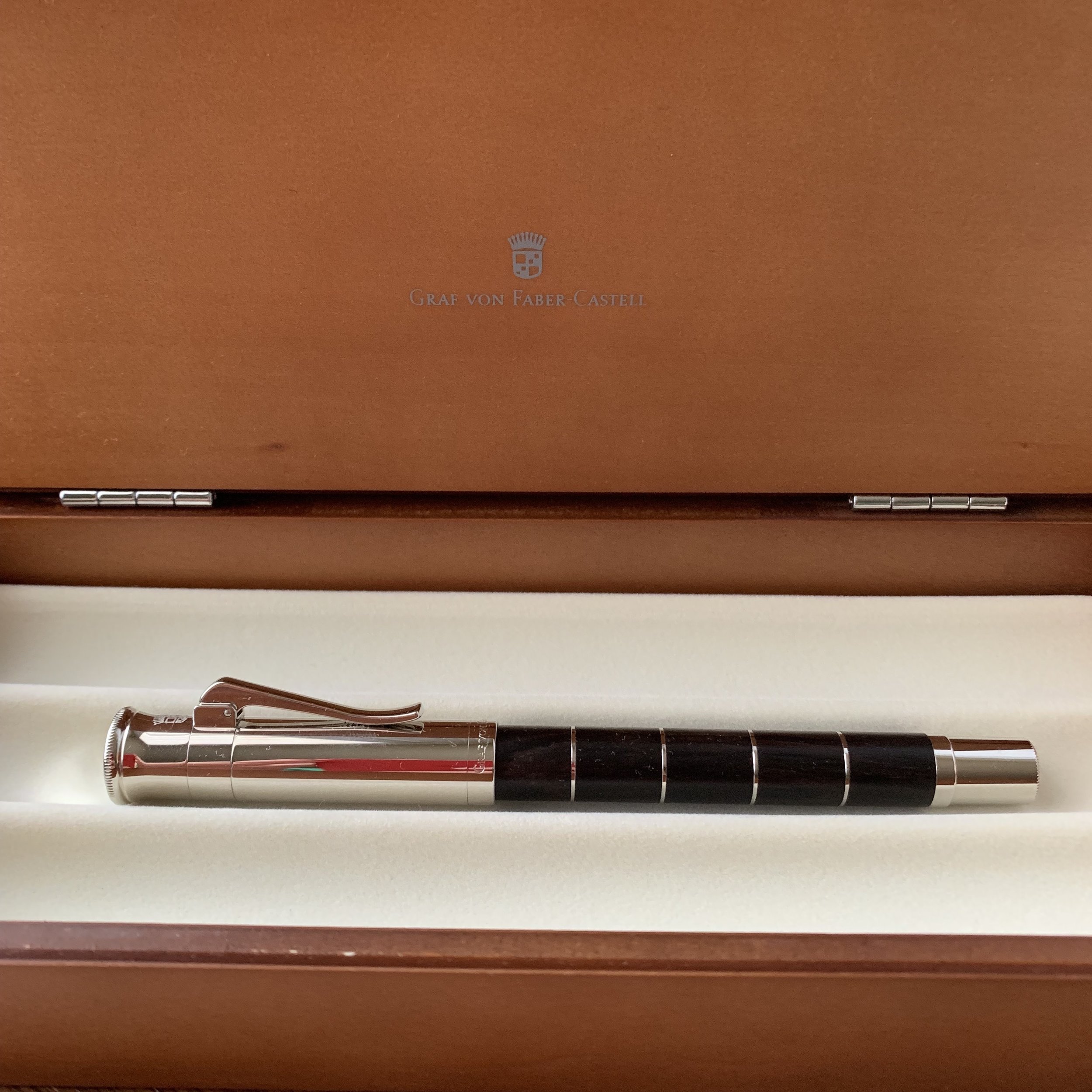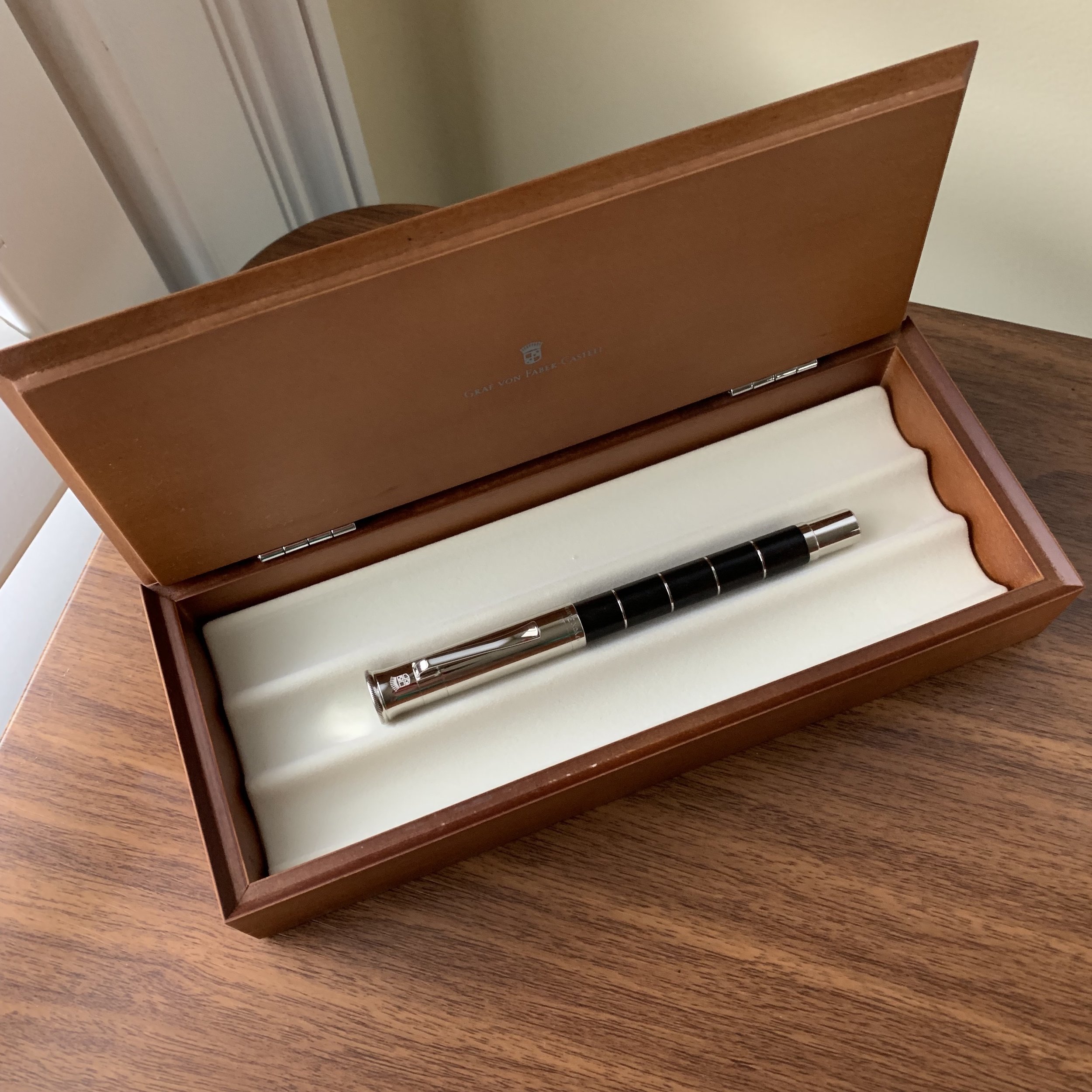If there’s one thing that I’ve learned during my near decade in the pen world, it’s that sometimes you enjoy things that you shouldn’t enjoy. What do I mean by that? Well, as a general rule, I tend not to like slimmer pens that don’t post. While there are exceptions, I typically find slim, non-posting pens unbalanced (posting the cap can give an otherwise too-skinny pen a necessary bit of heft), and in any event it can be a hassle to keep track of the loose cap while writing. Did I mention there are exceptions…?
I’ve previously reviewed the Graf von Faber-Castell Classic fountain pen, and enjoyed that pen when I had it on loan, but ended up returning the review sample due to concerns about the dimensions and how well those would work for me as an everyday writer. Since posting that review (back in 2018), I’ve acquired two Graf von Faber-Castell fountain pens, and after a longer test period, held on to both of them in my permanent collection. Of the two (a Guilloche and the pen featured here, the Classic Macassar), the larger Classic Macassar is my favorite.
Graf von Faber-Castell makes fountain pens in a range of sizes. The Classic series, which features most of their wood barrels, is larger than the Guilloche series, shown on the right.
I have a fair number of black-trimmed pens in my collection, ranging from Sailor’s Pro Gear Imperial Black and Black Luster to the Montblanc 149 Ultra Black release from a few years ago, so if I was every going to invest in one of Graf von Faber-Castell’s flagship pens, it would be this one. Featuring an 18k ruthenium-plated nib and PVD-coated titanium trim, the Classic Macassar is stunning to look at. The darker trim perfectly complements the darker Macassar Ebony wood, and like pretty much every other pen I’ve ever tried from Graf von Faber-Castell, the nib writes perfectly. The Company states that each of these nibs is “run-in by hand,” which I take to mean that it’s hand-tested and tuned before it leaves the factory.
The PVD coating on the metal section gives it a nice grip, and the elongated concave shape is exceptionally comfortable.
As I mentioned, design-wise, I shouldn’t love this pen as much as I do. The cap is extremely impractical, but I love the oversized, top-heavy look, and the spring-loaded clip works wonderfully. That said, this pen absolutely does not post. While the Graf von Faber-Castell website shows a photograph of the Classic Macassar posting relatively deeply, my pen barely posts at all, to the point where I don’t even want to post the pen for photography purposes because I don’t want to risk damaging the threads or internal cap. If posting is an absolute necessity for how you use pens, I’d consider the Graf von Faber-Castell Guilloche series, a slightly smaller, slimmer fountain pen that posts more securely.
For comparison purposes, I’ll show a photograph of my Graf von Faber-Castell Guilloche fountain pen, which is a slimmer pen that posts, even if the end result is a touch long for my taste.
Personally, I find that the Classic Macassar is just heavy enough for me to comfortably use unposted, and while the inability to post the cap will likely leave this particular fountain pen outside the “daily Workhorse” category, I’ve had a hard time putting it away. Even though I’ve told myself I should sell it, because it’s not an everyday user for me, I can’t. Do you have pens in your collection that you have some sort of inexplicable draw to, that you enjoy using even though it’s a pen that your experience tells you that you absolutely shouldn’t like, but you do anyway? Well, this is one of those for me.
The Graf von Faber-Castell Classic Macassar in-hand.
Takeaways and Where to Buy
Though an exceptional fountain pen with a unique look, like most GvFC products, the Classic Macassar retails at an extremely high price point. As of the time of writing, MSRP on this pen is $685 as shown on the Graf von Faber Castell US website, with most retailers having it priced around $550. That’s expensive, but then again, on par for a ruthenium-plated nib pen with blacked out titanium parts. (Compare with the Sailor Pro Gear Imperial Black, which now lists for $472, or the Montblanc 146 Ultra Black, which apparently has a secondary market value north of $1200?) Whether the pen is "worth it” to you goes far beyond practicality - for me, the combination of black trim and dark wood, as well as the wonderful writing experience offered by the Graf von Faber-Castell Classic pens in general, keeps this one in my collection.
For this review, I chose to ink this Graf pen with Ferris Wheel Press Roaring Patina Black, and the review paper is the excellent Life Noble Note.
I acquired this pen years ago, and can’t remember exactly where (though it was probably either Appelboom or the now-closed La Couronne du Compte). This post does not contain third-party affiliate links or advertising. The Gentleman Stationer is supported entirely by purchases from the T.G.S. Curated Shop, and pledges via the T.G.S. Patreon Program.

